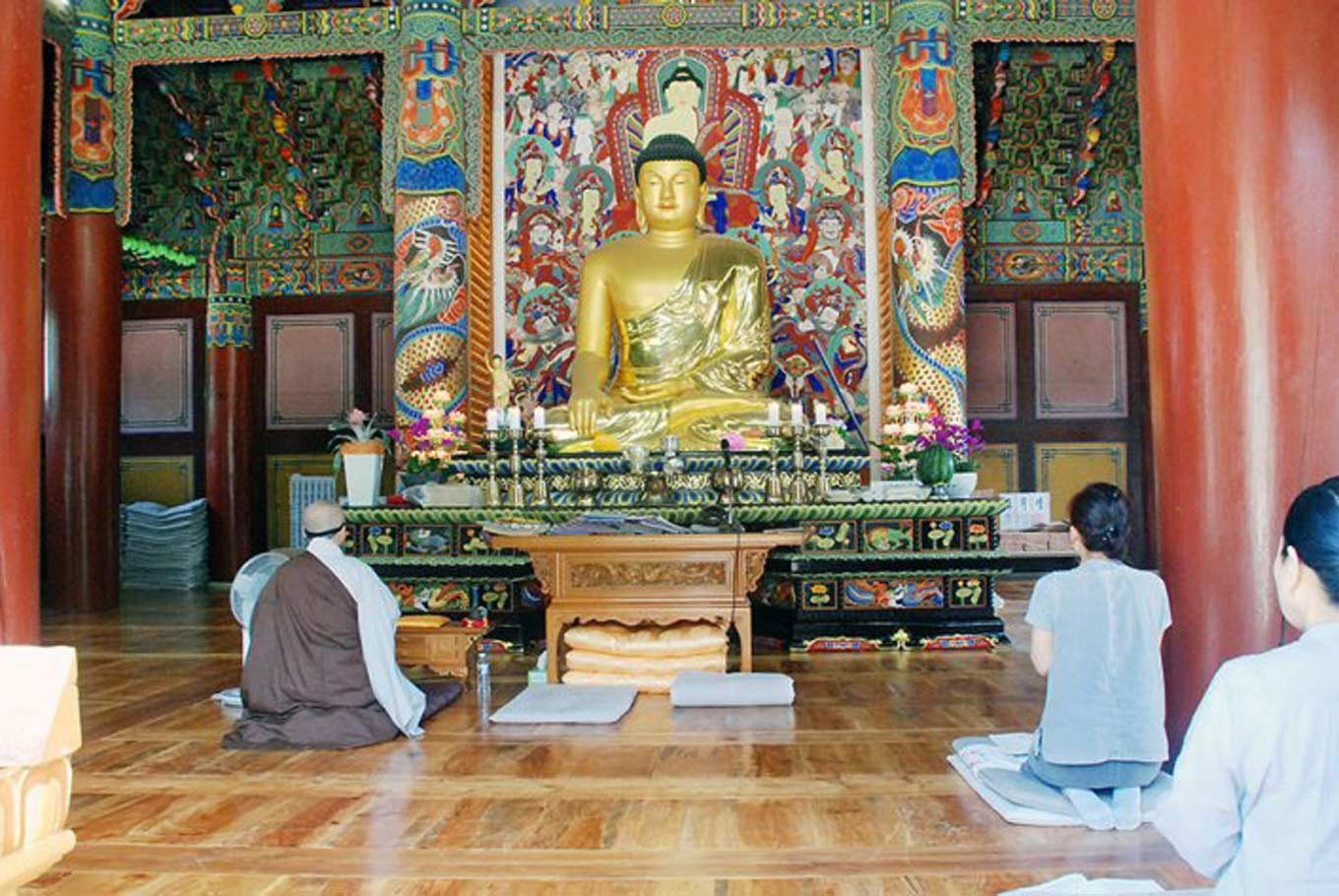Popular Reads
Top Results
Can't find what you're looking for?
View all search resultsPopular Reads
Top Results
Can't find what you're looking for?
View all search resultsFinding happiness, peace at Woljeongsa Temple
To enter the temple area, visitors have to cross Haetalgyo bridge, the site where the Korean drama, Guardian: the Lonely and the Great God or Goblin, was filmed.
Change text size
Gift Premium Articles
to Anyone
I
n the middle of a thick forest in the eastern valley of the Odaesan Mountain in Pyeong Chang County in Gangwon Province, around two hours from Seoul, is Woljeongsa Temple, one of Korea’s 10 major Buddhist temples.
Founded in 643 AD during the reign of Shilla Queen Seondeok by the Precepts Master Ven. Jajang, the temple is a good place for people to contemplate and experience Buddhist culture.
The atmosphere cannot be more romantic.
To enter the temple area, visitors have to cross Haetalgyo bridge, which spans a clear river that seems to be able to set you free from all kinds of pressure.
The bridge is best known as the site where the Korean drama, Guardian: the Lonely and the Great God or Goblin, was filmed.
Read also: Finding the Goblin in Korea
At the entrance, called the Heavenly King’s Gate, four statues of Buddhist kings greet visitors.
The temple provides a homestay with 15 rooms, where it usually welcomes 50 visitors every week. One room costs around US$90. But do not forget to bring along your own towels, socks to wear in the Buddha hall and comfortable shoes. Slippers and flip-flops are frowned upon.
Through Woljeongsa’s temple stay program, visitors can participate in monastic Buddhist life and experience the 1,700-year-old tradition of Korean Buddhism for short stays.
The program is also open to everyone regardless of their religious beliefs and there is no need to convert.
“People are here to practice happiness and peace. They’re searching for peace and light [because] Buddhism is about enlightenment,” one of the monks said during The Jakarta Post’s visit to the temple.
When he was speaking to the Post, the monk was standing near an octagonal, nine-story stone pagoda, which represented the Goryeo Dynasty.
Behind the monk was the Jeokgwangjeon or the Main Buddha Hall where several people bowed, which is one of the etiquettes visitors will be learning during their stay.
On week days, the temple offers a relaxation program that allows participants to spend their time freely except when they have to attend Buddhist ceremonies and take meals.
On weekends, it offers Buddhists cultural programs and various traditional experiences.
If visitors do not have enough time to experience the temple stay program, they can still participate in a program called Templelife.
One of the Templelife activities is to make 108 prayer beads with the help of an instructor.
The monk explained that in the traditional process of making the beads it was required that the maker bow 108 times, For tourists, the instructor usually asks them to bow just three times.
“In your mind, there’s delusion, anger. If you want to be free of the anger you have to practice bowing,” the monk said.
Visitors can take their beads anywhere in the temple complex while saying prayers according to their beliefs.
“If you’re a Buddhist, you can say ‘Buddhist, Buddhist, Buddhist.’ If you’re a Muslim, you can use it for zikr [chanting in praise of God]. It all depends on you. It can help you to concentrate,” said the monk.







